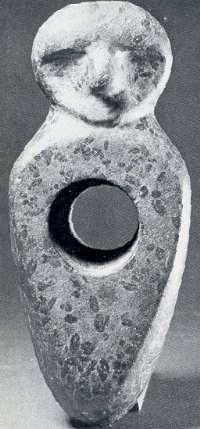History

The culture of the Finnish people was for the historians of the ancient world a complete mystery until Tacitus, in the year 98 AD, mentioned in his Germania a people called the Fenni, living somewhere in the northeastern Baltic region in unparallelled squalor and poverty. The northern area referred to by Tacitus was at that time already inhabited by peoples of various ethnic and historical origin, and it is questionable whether the barbarians of whom he spoke were in fact the forefathers of the present Finns or the Lapps. Through the centuries, Finland has been influenced by several cultures, notably during the Crusades of Christianity and during conflicts between Sweden and Russia.
Present day life in both eastern and western Finland displays clear relics of a pre-Christian religion. In the Orthodox region it was not uncommon as late as about 1900 for the head of the household to execute the traditional rites immediately after the Orthodox priest had blessed a new home. The purpose of the rites was to make the guardian spirits favourably disposed towards the new inhabitants.
In the historical era Finland remained a crossroads for two cultures. Christianity came to Finland from two directions from the 11th century onwards. One was Karelia, which had in the Viking era been under the influence of the ByzantineRussian Church of Novgorod. In many periods of history the province of Karelia proved significant as a cultural bridge between East and West, and also between North and South. The position of Karelia between conflicting groups was not easy in the 16th and 17th centuries in particular, when Russia and Sweden were repeatedly at war. The people of Karelia were split by political, economic and religious disagreement and pushed the borders of the traditional Karelian way of life further to the east. The GreekOrthodox tradition, gradually became adopted as the religion of the Karelians. A sort of symbiosis developed that was quite the opposite of the western form of Christianity. Three crusades were made to the southwestern part of Finland, in 1155, 1238 and 1293. Over the centuries a syncretistic religiousness emerged. As said, presentday life in both eastern and western Finland displays clear relics of a preChristian religion.
Saying that area was already inhabited, is quite limitative. Infact, nowadays archeological researches prove that there has been settlement in Finland area since the mesolithic, for about 9,000 years. The most important area was the coastal region from Porvoo to Vaasa. This was the nucleus area of the ProtoFinnic language, of folk poetry in Kalevala metre, of agricultural methods, and more. The Finland, the most northerly meeting point for eastern and western European cultural influences was already established by the Bronze Age, when the Scandinavians reached the southwest coast of Finland. The hunting and fishing economy continued in the central regions. Contrary to former hypotheses, the FinnoUgric peoples probably never had a common home in the region of the Volga. They inhabited far wider areas, from the Urals to the Baltic. A nomadic way of life was a necessity imposed by their economy.
History of the Finnish Culture
A stone axe from Finland (Neolithic).
